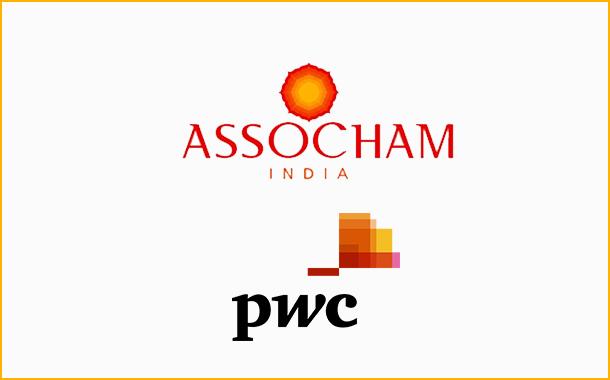New Delhi: The Indian media and entertainment industry is projected to grow at a CAGR of 11.7% from USD 30,364 million in 2017 to USD 52,683 million in 2022 due to rising populations, increasing disposable incomes and new technologies have fuelled the growth of all forms of content consumption, be it cinema, television or over-the-top (OTT) services, according to an ASSOCHAM-PwC joint study.
Television, cinema and OTT will collectively account for 46% of the overall growth in the Indian entertainment and media industry for the period from 2017 to 2022, noted ASSOCHAM-PwC joint study on ‘Video on Demand: Entertainment reimagined’.
Stand-alone subscription video on demand (SVOD) and Transactional video on demand (TVOD) will collectively grow from 296.69 million USD (19,328 million INR) in 2017 to 823.25 million USD (53,630 million INR) in 2022 at a CAGR of 22.6%, with SVOD holding a majority share throughout the projected period, noted the joint study.
Globally, the OTT market is set to grow at a CAGR of 10.1% during the period 2017–2022. During the same period in India, the segment is expected to grow from 297 million USD (19,328 million INR) to 823 million USD (53,630 million INR) in 2022 at a CAGR of 22.6%.
Mobile video advertising (largely AVoD) is the fastest growing sub-segment of India’s Internet advertising market, projected to rise at a CAGR of 32.8% from 2017 to 2022 and to reach 317 million USD (20,641 million INR) by 2022, noted the paper.
Data consumption in India will grow from 71,67,103 million MB in 2017 to 10,96,58,793 million MB in 2022 at a CAGR of 72.6%.3 With lower than ever data tariffs and increasing smartphone penetration in the country, which is around 40% as of 2017, it is safe to assume that the VoD market will be a significant beneficiary of these developments.
As more and more people opt for smartphones, it is evident that data consumption will be on the rise, which will eventually lead to an increasing number of hours spent on mobile devices for viewing content online. Tablets are another promising device for the VoD industry. However, India has just about 5.3% penetration as of 2017, and this is expected to go up to just about 10% in 2022.
The governments all over the world have been contemplating a framework to regulate OTT service providers. India is also working on a holistic policy framework that encompasses all aspects of digital broadcasting. Regulators should consider the learning from countries where attempts have been made to regulate OTT service providers and include the best practices while determining the policy framework for OTT service providers in India.
A robust plan to upgrade the IP laws of India to meet global standards and, at the same time, cater to the digital era of content consumption and distribution should be a priority on the government’s agenda.
With a CAGR of 22.6% during the period of 2017–2022, the Indian video OTT market is poised to outperform the global video OTT market, which is pegged to have a CAGR of 10.1% during the same period. By 2022, the Indian video OTT market will be amongst the top 10 markets globally with a market size of 823 million USD (53,630 million INR).
India’s per capita media and entertainment spend will be capped at a mere 32 USD (2,080 INR) by 2021 as nominal GDP per capita reaches 2,560 USD (1,66,400 INR) for the projected year. The spend is much lower than that of China, which will stand at 222 USD (14,430 INR) for the same period, and that of the USA, which will have the highest spend at 2,260 USD (1,46,900 INR).

“The video on demand (VoD) market has evolved across the world, including in India over the last decade. Regional and quality content, delivered with a focus on unique and customised ‘user experience’ through the use of technology, is set to become the mainstay of success for any VoD service provider. Traditional and conventional media industry players on one hand and OTT players on the other will coexist in India and achieve impressive growth in the coming years. We are now seeing the third wave of convergence in the entertainment and media industry. The five fundamental drivers of this convergent business model are uninterrupted connectivity, mobile devices becoming the primary source of content consumption, the need to move away from traditional revenue streams, value shifting from content creators to platforms, and ability to provide a personalised offering to the consumer”, said,Frank D’Souza, Partner and Leader, Entertainment and Media Sector, PwC India.

















